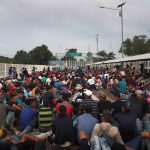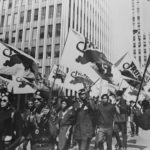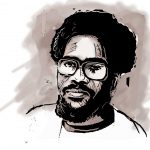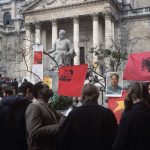Latin America’s revolutionary shifts in 1968
The events of 1968 took shape as spillovers that neutralised old mechanisms of control within the family, schools, trade unions and left-wing political parties.
Author:
23 January 2019

During the series of struggles known as the Revolution of 1968, a continuous succession of demonstrations took place in rural areas and big cities. In Latin America, the student revolts in Mexico were one of the most emblematic. These revolts became engraved in collective memory by the Tlatelolco massacre (2 October 1968), in which hundreds of students were assassinated by the military to guarantee a “pacific” celebration of the Olympic Games.
There were other much less visible movements, that still had a critical effect on the political configuration of the principal countries and, above all, led the way for the emergence of new subjects that had long been made invisible.
It was in the peripheral areas of major cities where the biggest unimaginable changes were seen, with the arrival of millions of migrants who illegally occupied land and built neighbourhoods and housing, defying the authorities and massive real estate companies. It is estimated that 60% of Latin American cities have been built by these migrants.
In 1973, in Monterrey, Mexico, the colony Land and Liberty (“Tierra y Libertad”) was founded with the support of the students who had been part of the events of 1968. By 1980, 40 colonies had been created. All of them had decision-making bodies, community self-defence units and a common pattern of organisation that consisted of local assemblies in each block, an election of rotating delegates, cooperatives of production, trade and transportation, as well as primary schools built and managed by the communities and the provision of public services like water, electricity and sewage. It was the most relevant and thriving urban movement to develop in Latin America and came to have 100 000 inhabitants.
Making new neighbourhoods
Lima, the capital of Peru, experienced an even more profound process of occupation: the Andean migrants, who were at the forefront of an “overflow of people”, increased the city’s population from 1 million to 6 million inhabitants in only 30 years. The occupation of a sandy desert by thousands of families in the southern outskirts of Lima, in April 1971, is one of the most emblematic cases of this phenomenon. The neighbourhood was named by the community “Villa El Salvador” and over the years it turned into a district of the city with 350 000 inhabitants. Everything in the neighborhood was built from scratch, following the Andean principle of reciprocity and minga or collective work: the houses, streets, water and electricity networks, education and health centres. They also created marketplaces, production units and transportation services.
Each block had health, education, production, commercialisation and security secretaries, achieving a level of self-management that had only been seen before in rural areas. The occupation’s first convention, which was celebrated in July 1973, decided to give the occupation the name self-managed urban community of Villa El Salvador (“comunidad urbana autogestionaria de Villa El Salvador” or Cuaves). The organisation managed the finances, the communal water taps and different community-owned businesses of textile manufacturing, concrete-block manufacturing, a carpentry workshop and a pharmacy. Cuaves developed a plan for the occupants to build their houses and create sources of employment. They avoided losing their money in capitalist forms of trade, lent money with low interest rates and managed their own companies and assemblies, which allowed for a decentralisation of power.
Related article:
Even in Buenos Aires, the most European-style city on the continent, informal workers began to create their own neighbourhoods using two different methods. The first, known as villas miseras or shanty towns, began in the 1960s with spontaneous occupations of land in the middle of big cities, where families individually started to assemble. The result of this was precarious neighbourhoods, quite different from the city around them, where the movement of priests for the third world and left-wing activists carried out important organisational work.
The second way in which these occupations occurred from the 1980s onwards is known as asentamientos or settlements, with a genealogy similar to the one of the landless peasants in Brazil (the movement known as MST). The word “settlement” refers to the biblical concept of settling after having journeyed through the desert, given that many of the popular sectors that took part in these settlements came from Ecclesiastical base communities.
The two best-known movements related to the changes brought about by the revolution of 1968 are Zapatismo (EZLN) and the landless movement in Brazil (MST). These are two of the most comprehensive and complete experiences that aimed to change the world from the bottom, although each of them followed very different strategies. The EZLN proposes the creation of new autonomous worlds, with no relationship to the state or political parties. MST seeks a revolution that consists of seizing power and therefore maintains a strong relationship with the state (from which it receives numerous subsidies) and the most influential left-wing parties.
Two steps to power
They are attempting new strategies. Sociologist Immanuel Wallerstein reminds us that the “two-step strategy” of seizing the power to change the world had been created by anti-system groups after the Paris Commune and lasted until 1968. During this period, it became obvious that the second step had failed, as neither socialist revolutions nor the national liberation and decolonisation processes had achieved their goals. Still, a new strategy cannot be produced in such a short period of time as it implies changes in the political culture that are, necessarily, prolonged and complex.
MST wants to change the world. In its formation, it is heavily influenced by three trends: liberation theology, popular education and the different guerrilla resistance movements against the military dictatorship installed in Brazil in 1964. In three decades, they have taken back 25 million hectares, where they created 5 000 settlements inhabited by two million people. The MST is part of a long tradition of peasant struggles and claims itself to be the heirs of the Peasant Leagues broken up by the coup d’etat of 1964.
The first occupations took place in the 1970s in the southern part of the country. MST was officially founded in 1984 after a series of regional meetings that reunited people from settlements, encampments and other groups in the process of organising themselves, while massive demonstrations against the military coup (1964-1985) were going on. In little more than two decades, the 350 000 families from settlements associated with the MST already had 1 900 production, commerce and service-providing associations, 100 farming cooperatives, regional credit unions and fair-trade cooperatives, and 100 agroindustrial projects.
The movement’s most remarkable aspect is its educational work. It established 2 000 schools in the settlements attended by 200 000 boys and girls, and where 50 000 adults were taught to read and write. Furthermore, this organisation sponsors 100 courses in collaboration with national universities where 2 000 landless people attend classes. Through their actions, MST carry out agrarian reform from below, without waiting to gain political power. They not only occupy unproductive land of large landowners but in them they begin to form new worlds in each settlement, based on social relations that are distinct from the hegemonic ones.
Brave new worlds
Its experience is similar to what other movements had done, both rural and urban, in the region. Perhaps another key point in this shift was in the urban movements, like the social housing project Nueva La Habana in Santiago, Chile, in 1970.
In the 1960s, one in three Santiago residents lived in “encampments”, which were occupations where the “roofless” would move to demand housing from the state. Some of these occupations began to build small “new worlds”: schools for children because the state did not have resources, health centres to deal with emergencies and ways of meting out justice because the institutions did not exist and, when they appeared accompanied by the police, the results were even worse.
Nueva La Habana was an encampment planned by the Revolutionary Left Movement (MIR) and was made up of more than 1 500 families who settled in a spacious area on the outskirts of the city. They organised themselves into 24 blocks, with 64 families living according to an orderly grid in each of them. Despite there being a left-wing government that supported them, because of their distance from state services, the encampment had to provide education, health, communication, supplies and justice for itself. The inhabitants built their own houses.
The schools were the most notable part of the experience as the community was involved in their management and, by doing so, modified the pedagogical practices. The teachers were subject to the territorial control of those who lived there. They would veto them or accept them but, in any case, they wanted to get to know their points of view. This generated conflicts between the culture of the community and the state school culture, which became evident in the ways in which time and space where controlled inside the classrooms.
Like many other projects, the Nueva La Habana represented the search for something new. They did not know exactly what that was, but through their actions people began to build a new world without waiting for the left-wing parties to take power. They knew what they did not want: to be subordinated to those on top or for them to set the course, whether or not those on top were from the right or the left.
This is the second in a series of five articles that examine how protests and ideas generated in 1968 changed the political, social and educational contours of the world.
Part one:
Part three:
Part four:
Part five:
A version of this text was produced in Montevideo in March 2018.
This is an edited excerpt that first appeared in Thread.





